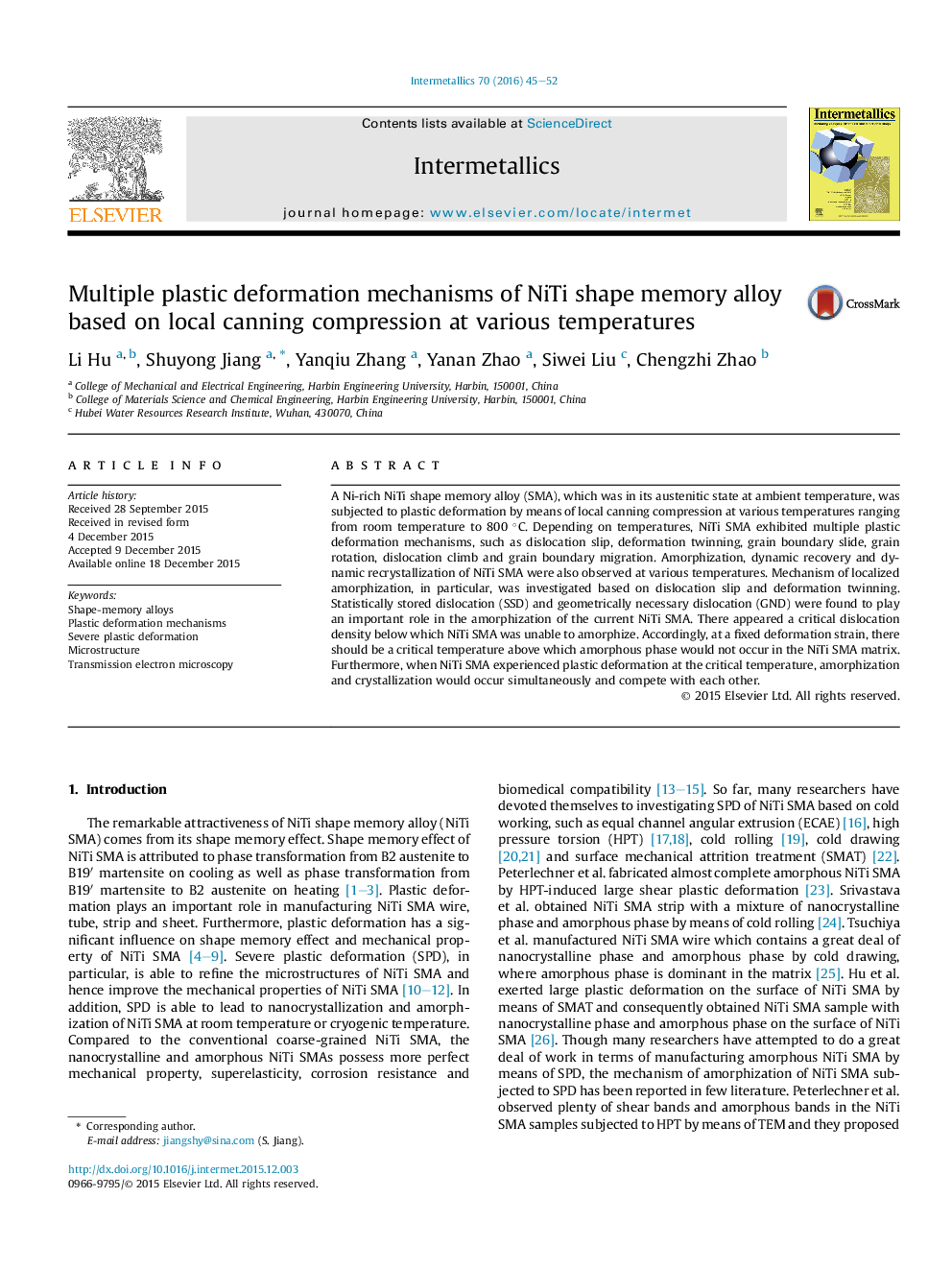| Article ID | Journal | Published Year | Pages | File Type |
|---|---|---|---|---|
| 1599678 | Intermetallics | 2016 | 8 Pages |
•Multiple plastic deformation mechanisms of NiTi SMA are put forward.•Mechanisms of amorphization of NiTi SMA are studied based on various temperatures.•SSD and GND play an important role in amorphization of NiTi SMA.•There exists a critical dislocation density which induces amorphization of NiTi SMA.•Amorphization competes with crystallization at a critical temperature.
A Ni-rich NiTi shape memory alloy (SMA), which was in its austenitic state at ambient temperature, was subjected to plastic deformation by means of local canning compression at various temperatures ranging from room temperature to 800 °C. Depending on temperatures, NiTi SMA exhibited multiple plastic deformation mechanisms, such as dislocation slip, deformation twinning, grain boundary slide, grain rotation, dislocation climb and grain boundary migration. Amorphization, dynamic recovery and dynamic recrystallization of NiTi SMA were also observed at various temperatures. Mechanism of localized amorphization, in particular, was investigated based on dislocation slip and deformation twinning. Statistically stored dislocation (SSD) and geometrically necessary dislocation (GND) were found to play an important role in the amorphization of the current NiTi SMA. There appeared a critical dislocation density below which NiTi SMA was unable to amorphize. Accordingly, at a fixed deformation strain, there should be a critical temperature above which amorphous phase would not occur in the NiTi SMA matrix. Furthermore, when NiTi SMA experienced plastic deformation at the critical temperature, amorphization and crystallization would occur simultaneously and compete with each other.
Graphical abstractFigure optionsDownload full-size imageDownload as PowerPoint slide
